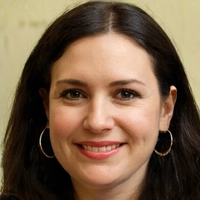European Healthcare Coverage Checker
Check Your Healthcare Coverage
See which European countries provide free healthcare based on your situation. Note: Free access applies only to legal residents, not tourists.
Your Situation
Important Notes
Free healthcare applies only to legal residents. Tourists get emergency coverage only. You must register with local authorities to qualify. Private insurance may still be needed for dental, vision, or faster access.
If you're wondering where you can walk into a hospital in Europe and pay nothing out of pocket, you're not alone. Millions of people move, retire, or travel across Europe each year hoping to access care without being hit with a bill that could wipe out savings. The truth? Healthcare isn’t free everywhere in Europe-but it is free at the point of use in most countries. That’s the key difference.
What Does 'Free Healthcare' Actually Mean?
When people say healthcare is free in Europe, they don’t mean the government pays for everything with magic money. It means you don’t pay at the time of service. Instead, it’s funded through taxes or mandatory social contributions. If you’re employed, your employer withholds a percentage of your salary. If you’re self-employed, you pay a set rate. Retirees and low-income people often pay less or nothing at all.
This system is called universal healthcare. It’s not charity. It’s insurance pooled across the whole population. You don’t need to buy a policy. You don’t need to check if your doctor is in-network. You just show up-and if you’re a legal resident, you’re covered.
Countries Where Healthcare Is Free at the Point of Use
Here’s where you can get care without handing over cash when you walk in:
- United Kingdom - The NHS covers everything from GP visits to emergency surgery. You might wait weeks for a non-urgent appointment, but you won’t pay a cent.
- Sweden - A cap on annual out-of-pocket costs (around €1,100). After that, care is free for the rest of the year. GP visits cost about €20-€30, but children and seniors pay nothing.
- Norway - Similar to Sweden. A yearly maximum of about €1,000 for all services. Once you hit it, you get a free card for the rest of the year.
- Denmark - Funded by local taxes. No co-pays for doctors, hospitals, or most prescriptions. Dental care for adults is not covered, but kids get full coverage.
- Finland - Primary care is free for residents. Hospital stays cost up to €35 per day, but only for the first 10 days. After that, it’s free.
- Portugal - Basic care is free for everyone, including non-residents in emergencies. Prescriptions cost a small fee, but low-income families get them free.
- Spain - Public healthcare covers all legal residents. You get a health card. GP visits, specialist referrals, and hospital care are free. You pay for some prescriptions, but many are subsidized.
- Italy - The Servizio Sanitario Nazionale (SSN) covers everything. You might pay a small co-pay for specialist visits or prescriptions, but it’s capped at €50-€100 per year for most people.
- France - The system is 70-80% covered by the state. You pay upfront and get reimbursed. But if you have a Carte Vitale (which residents get), you often pay nothing at the counter because the system auto-reimburses.
- Germany - Statutory health insurance covers 90% of the population. You pay a percentage of your income (around 7-8%), but your employer pays half. No bills at the doctor.
- Austria - Mandatory insurance through your employer. You pay nothing at the point of care. Even dental fillings and glasses are covered.
- Netherlands - Everyone must buy private insurance, but it’s heavily regulated. The government sets a standard package. Premiums are capped at €1,100 per year, and out-of-pocket costs are limited. It’s not free, but it’s affordable and universal.
Where It’s Not Free-or Not Fully Free
Some countries have systems that look like free healthcare but aren’t. Here’s what to watch out for:
- Switzerland - Everyone must buy private insurance. Premiums can cost €300-€500 per month. You pay deductibles and co-pays. It’s not free, even though it’s mandatory.
- Belgium - You pay upfront and get reimbursed. If you don’t have a health card, you pay full price. It’s universal, but not immediate.
- Czech Republic - Free for residents, but if you’re a tourist or short-term visitor, you pay. Emergency care is covered, but non-urgent care isn’t.
- Poland - Free for citizens and legal residents, but long waiting times are common. Private clinics are popular for faster service.
And then there are places like Ireland, where you have a public system-but if you’re not on a medical card, you pay for GP visits, prescriptions, and hospital stays. That’s why many people here buy private health insurance. It’s not about choice-it’s about speed.

Who Gets Access? Residents Only
Here’s the catch: free healthcare in Europe is tied to legal residency. Tourists? Emergency care is covered under the European Health Insurance Card (EHIC) or its replacement, the GHIC. But if you need a hip replacement or a specialist consultation, you’ll be billed. You can’t move to Germany and expect to get free cancer treatment just because you’re from the U.S.
Each country has its own rules. In Spain, you need to register at your local town hall and get a social security number. In Sweden, you need to be registered in the population database. In Portugal, you need proof of address and income. It’s not automatic. You have to apply.
What’s Not Covered?
Even in the best systems, some things are excluded or partially covered:
- Dental care - Most countries cover kids, but adults pay. Exceptions: Denmark (partial), Norway (partial), Austria (full).
- Eye care - Glasses and contacts are rarely covered. Some countries give vouchers for low-income people.
- Prescriptions - Most countries charge a small fee. Germany caps it at €10 per prescription. France reimburses 70%. Italy charges €1-€5 per pill, but low-income people pay nothing.
- Alternative medicine - Acupuncture, chiropractic, homeopathy? Usually not covered.
- Private rooms - In hospitals, you’ll get a shared ward unless you pay extra.
Why Do Some People Still Buy Private Insurance?
Even in countries with free public healthcare, many people buy private insurance. Why?
- Waiting times - In the UK, a routine knee surgery might take 6-12 months. Private insurance cuts that to 2-4 weeks.
- Choice of doctor - In public systems, you’re assigned. In private, you pick.
- Comfort - Private hospitals often have single rooms, better food, and faster discharge.
- Dental and vision - Public systems don’t cover them well. Private insurance fills the gap.
In Germany, 10% of people have private insurance because they earn above the income threshold. In France, 90% of people have a complementary private plan called a mutuelle to cover what the state doesn’t.

Real-Life Example: A British Citizen in Spain
Sarah, 68, retired from a teaching job in Manchester. She moved to Valencia in 2023. She applied for her S1 form (from the UK) and registered with the Spanish social security system. She got her health card in 3 weeks. Now, she sees her GP for free, gets her blood pressure meds for €1, and had her cataract surgery at no cost. She pays €120 a month for private insurance-just for dental and faster access to specialists. She says it’s the best decision she’s ever made.
What If You’re Not a Resident?
If you’re visiting, studying, or working temporarily:
- Get a Global Health Insurance Card (GHIC) if you’re from the UK.
- Get an EHIC if you’re from an EU country.
- Buy travel insurance with medical coverage if you’re from the U.S., Canada, or Australia.
Emergency care is covered. Non-emergency care? You pay. Don’t assume you’re covered just because you’re in Europe. A broken ankle in France? Covered. A routine check-up? Not unless you’re registered.
Final Thought: Free Doesn’t Mean Perfect
Free healthcare in Europe isn’t flawless. Long waits, understaffed clinics, and limited access to specialists are real problems. But it’s also the reason people live longer, healthier lives here than in the U.S., where medical debt is the leading cause of bankruptcy.
If you’re considering moving to Europe, don’t just look at the cost of rent or groceries. Look at the cost of health. In most of these countries, you don’t have to choose between paying your rent and filling your prescription. That’s not just policy-it’s peace of mind.
Is healthcare really free in all of Europe?
No. Healthcare is free at the point of use in most European countries-but only for legal residents. It’s funded by taxes or social contributions, not by the government handing out free care. Tourists get emergency care, but not ongoing treatment. Some countries, like Switzerland and the Netherlands, require mandatory private insurance.
Can I move to Europe just for free healthcare?
Not easily. Most countries require you to be a legal resident-through work, retirement, family reunification, or long-term visa-to qualify for public healthcare. You can’t just show up and sign up. Each country has strict rules on residency status, income proof, and registration. Trying to game the system often leads to being denied care or fined.
Do I need private health insurance if I live in a country with free healthcare?
You don’t need it, but many people get it. Public systems often have long wait times for non-emergency care. Private insurance gives you faster access, choice of doctor, private rooms, and coverage for things like dental and vision. In countries like France and Germany, most people have a private supplement to cover what the public system doesn’t fully pay for.
What about dental and eye care? Are they free?
Rarely. Most European countries cover dental care only for children and low-income adults. Adults usually pay out of pocket or get partial coverage. Eye exams and glasses are often not covered at all. That’s why private insurance plans often include dental and vision packages-they fill a real gap.
How does healthcare in Europe compare to the U.S.?
Europe spends less per person on healthcare than the U.S.-about half as much-and gets better outcomes. Life expectancy is higher, infant mortality is lower, and people don’t go bankrupt from medical bills. The U.S. system is private and profit-driven. Europe’s is public and needs-driven. The trade-off? You might wait longer for a non-urgent appointment, but you won’t face a bill you can’t pay.
What if I’m retired and living on a pension? Can I still get free healthcare?
Yes, in most countries. If you’re a retiree from another EU country, you can apply for an S1 form from your home country’s pension authority. This allows you to access public healthcare in your new country. In places like Spain, Portugal, and Italy, many retirees use this system. You still need to register locally, but your pension counts as proof of income and coverage.




